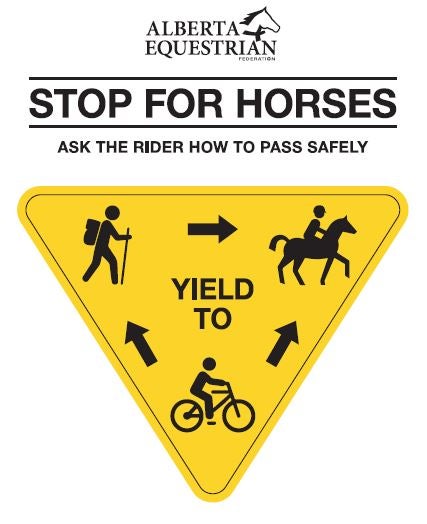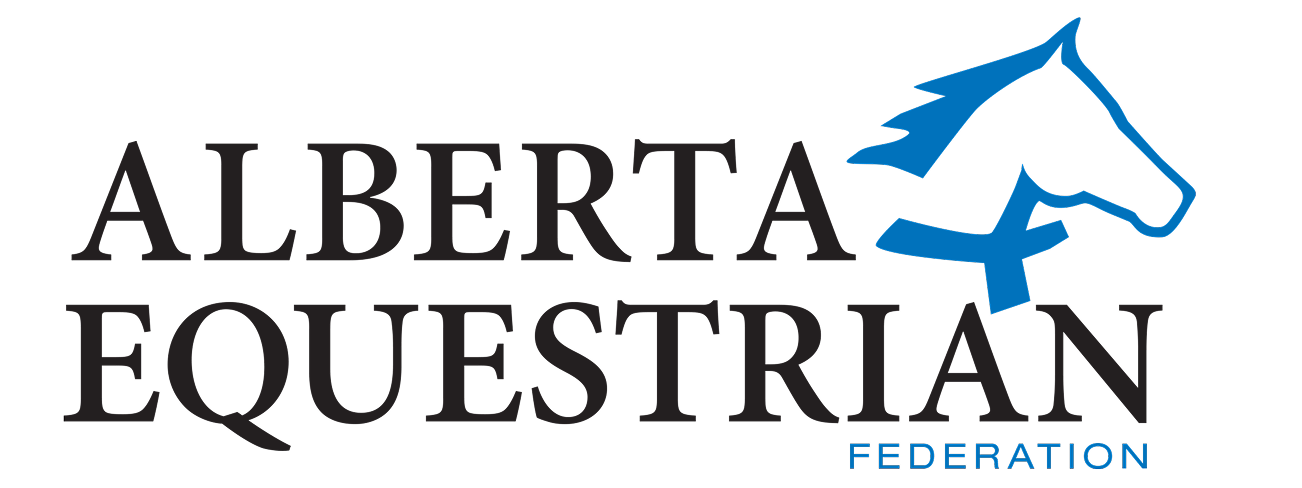Trail riding can be one of the most fun and exciting equestrian activities, but it is important to understand and practice safe trail riding. The AEF has put together a series of videos based on best practices and recommendations from experienced trail riders that will help keep you and your mount safe, knowledgeable, and comfortable when you hit the trails. Scroll down to view our Video Guides on Responsible Trail Use in Alberta, or keep reading for more information.
Whether you ride during the day or night, are sticking to your own property or heading out to a wilderness area, proper preparation will set you up for a successful, safe adventure.
- Research where you will be riding, Alberta Parks provides a really great listing of equestrian trails and campgrounds here, or visit the Government of Alberta’s interactive Crown Land recreation map.
- Choose one map to follow before venturing out, to ensure that the entire group is on the same page. Make sure someone else knows where you will be going.
- If possible, do a pre-check on the trail or call in advance to be sure that it is in good condition and to ask about any potential trouble spots along the way.
- Decide as a group what is expected of the riders and their horses. Point out which horses are dominant, the speedy or slow walkers, mares that may be in heat, and horses that tend to kick. Also, discuss each rider’s skill level so the more advanced ones can look out for the novices.
- Designate an experienced rider with a seasoned horse as the group leader. This person should know the trail well and be confident that he or she can handle myriad situations.
- Ensure the rider with the most first aid knowledge is carrying the first aid kit.
- Choose a form of emergency communication. If cell phones won’t work in the area you plan to be in (this is often the case), be sure to have a satellite phone or GPS emergency beacon or device (SPOT, InReach etc) to contact emergency help.
Etiquette
Trail riding, like all aspects of equine activity, has its rules and regulations pertaining to trail use and courtesy. How a person rides a trail can determine not only their own enjoyment but the safety of themselves, their horse and other trail users.
With the high demand for trails, there are very few trails dedicated strictly to horseback riding. On average, and especially in highly populated areas, most trails are multi-use or combined usage. In general, as horses are prey animals, common trail etiquette dictates that cyclists and hikers yield to horses.

It is also a rule of thumb to always ride in single file – this helps reduce the chances of horses kicking each other, leaves room for other trail users and helps to disburse any horse droppings so they breakdown faster. It’s also proper etiquette to pick up your horse’s poop and any spilt bedding, feed or hay from common parking and staging areas and either haul it out with you or dispose of it in the designated areas. As good stewards of the environment we should always practice leaving no trace.
Understanding etiquette goes hand-in-hand with safety on the trails. Read more about trail riding etiquette.
Safety
Trail riding is a popular way to spend time outdoors enjoying nature, friendship, and your equine partner. Safety should be first and foremost when riding on the trails. There are many considerations to keep in mind as you prepare to hit the trails, here’s a short list of items to be sure to have on hand when venturing out:
- Carry an emergency first aid kit for you and your horse
- Always bring a hoof pick along
- A pocket knife, string or bailing twine and lighter or matches
- Toilet paper or tissues (you never know!)
- Visit Outdoor Safety | Alberta Parks to learn more
AdventureSmart shares more excellent resources on safety and even an app to plan your trip!
To report dangerous wildlife encounters or emergencies as well as suspected poaching contact Report A Poacher or call 1-800-642-3800.
Call 310-LAND (5263) to access general information about Crown land and to report public safety incidents, illegal activity and enforcement concerns.
To report a wildfire, phone 310-FIRE (3473) toll-free from anywhere in Alberta.
AEF’s Video Guides to Responsible Trail Riding in Alberta
Donate today to the AEF’s Trail Supporter Fund to help support the development, maintenance and improvement of Alberta’s Equestrian trails.
